Best beginner DSLR cameras for 2024: top entry-level choices for new photographers
The best beginner DSLRs for learning your craft
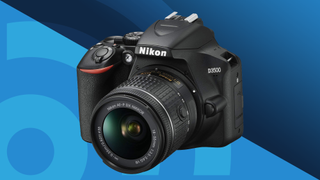
DSLRs might feel old hat now, but we think the best options still have a lot to offer for beginner photographers in 2024. Sure, most of the top beginner cameras are now mirrorless, but beginner DSLR cameras and their lenses are typically more affordable and easier for first-time photographers to handle. In our experience, they are fantastic cameras to learn with.
Of all the entry-level DSLR cameras we've tested, the one we'd buy is the Nikon D3500. Officially it has been discontinued, but you can still find it online, especially secondhand. And we would try, because it's simple to use, shoots excellent stills and has reliable battery life – three of the key things we look for when reviewing any DSLR. In fact, any one of the cameras in this guide can make for a secondhand bargain, and could leave you enough change to buy decent a couple of decent lenses to go with it, which could take your stills to the next level.
All the cameras in this guide feature a cropped APS-C sensor, meaning their bodies and lenses can be physically smaller than pricier DSLRs with full-frame sensors. The best options of the latter can be found in our best DSLR camera guide. This guide gives you a clear overview of which beginner DSLRs are worth looking at it in 2024. We've spent hours testing each of them, to get a realistic idea of how well they perform and where their advantages lie. We've summarized the results of those reviews below and the retailers we'd suggest making your purchase from.
Top 3 picks
The overview below will give you an instant summary of the best beginner DSLR cameras you can buy in 2024. When you find one that fits your requirements, use the links beneath each entry to jump down to our full summary reviews.
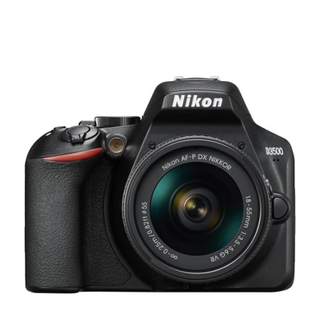
The best beginner DSLR overall
With great image quality, intuitive menus and superb battery life, the Nikon D3500 continues to offer top value for beginners.
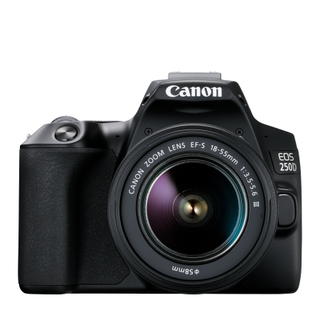
The best budget DSLR for beginners
It’s not the newest model, but a small body and versatile lens mount make the 250D a great choice for fans of the DSLR format.
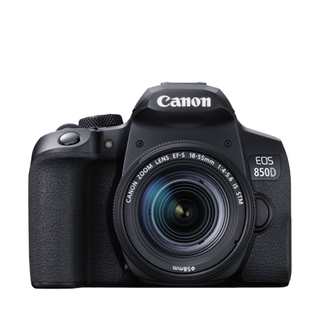
The best premium beginner DSLR
Older DSLRs offer better value, but a vari-angle touchscreen and excellent AF make the 850D an appealing premium option.
Best by use-case
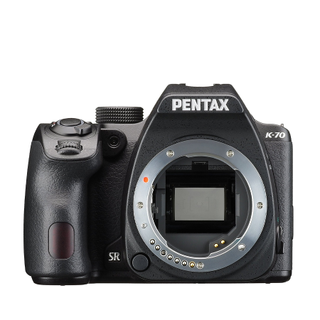
The best rugged beginner DSLR
Solid, compact and reliable, the Pentax K-70 offers enough features to keep novices occupied as they learn the ropes.
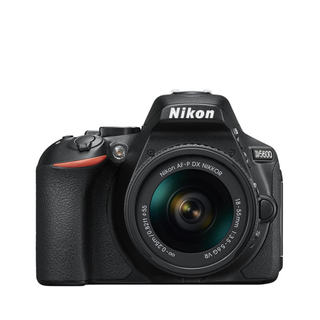
The best beginner DSLR to grow with
A well-equipped camera that’s comfy to use and produces detailed images, the D5600 is a great option to improve with.
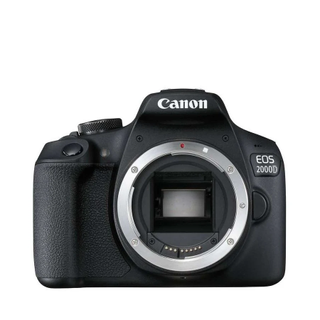
The best bargain beginner DSLR
Its specifications are modest, but if you want a no-frills DSLR on a limited budget, the EOS 2000D is a solid place to start.
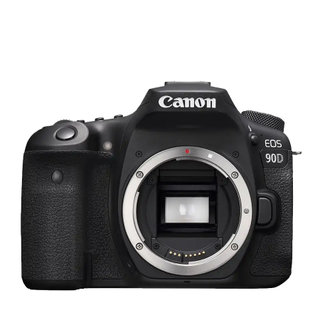
The best enthusiast beginner DSLR
If you prefer DSLR to mirrorless, the 90D is a feature-packed option with a high-res sensor and speedy, smooth performance.

Tim is TechRadar’s Cameras Editor. He has more than 15 years’ experience as a journalist and photographer. Though Tim now shoots mainly with mirrorless, he’s spent plenty of time with DSLRs. That’s given him an in-depth knowledge of what makes a good DSLR for beginners. Tim notes, “many entry-level DSLR cameras are no longer in production. For now, it's still possible to find most of the models listed below, including the Nikon D3500. If you're struggling to track down new stock, it's also worth looking at used models on the second-hand market."
The best beginner DSLRs for 2024
Why you can trust TechRadar
Below you'll find full write-ups for each of the best beginner DSLR cameras in our list. We've tested each one extensively, so you can be sure that our recommendations can be trusted.
The best beginner DSLR overall





Specifications
Reasons to buy
Reasons to avoid
Nikon D3500 sample images

Click here to see the full-size image

Click here to see the full-size image

Click here to see the full-size image

Click here to see the full-size image

Click here to see the full-size image
✅ You have a sharp eye: The D3500’s 24.2MP sensor produces impressive stills, especially when paired with decent DX mount lenses.
✅ You value longevity: With a huge 1,550-shot battery life, the Nikon D3500 is a camera that can keep going and going on a single charge.
❌ You want to shoot 4K video: Unlike most smartphones, the Nikon D3500 is limited to Full HD recording, rather than 4K footage.
❌ You like to use a touchscreen: With the same fixed 921,000-dot display as the D3400, the D3500 doesn’t benefit from a touch interface.
Nikon has officially ceased production of the D3500, but it remains an excellent option for those who are new to photography. Building on the foundation laid by the D3400, it adds a handful of extra perks. Battery life is one of them: unlike power-hungry mirrorless models, we found in testing that the D3500 could capture more than 1,500 images between charges – way ahead of most other DSLRs. We found that the 24MP sensor was capable of delivering excellent image quality, too.
Nikon also revised the body and control layout of the D3500 compared to previous generations, which we think makes it nicer to handle and easier to use. The useful Guide Mode takes the first-time user’s hand and walks them through all the key features in a way that makes everything easy to understand. We still think the Nikon D3500 is the best DSLR option for new photographers, and one of the best cameras for beginners overall. If you’re just getting started and can find one in stock, we reckon you will as well.
Read our in-depth Nikon D3500 review
The best budget DSLR for beginners





Specifications
Reasons to buy
Reasons to avoid
Canon EOS Rebel SL3 / 250D / 200D Mark II sample images

Click here to view the full-size image

Click here to view the full-size image

Click here to view the full-size image

Click here to view the full-size image

Click here to view the full-size image

Click here to view the full-size image

Click here to view the full-size image

Click here to view the full-size image
✅ You want traditional DSLR handling: The EOS 250D balances a well-built portable body with the handling for which DSLRs are known.
✅ You like a lot of lens choice: Canon’s EF mount is long-established, meaning the EOS 250D is compatible with a large pool of lenses.
❌ You want top-spec autofocus: The Dual Pixel CMOS AF system is excellent, but 9-point autofocus looks dated next to rivals.
❌ You shoot a lot of video: The EOS 250D can record 4K footage, but it’s subject to a crop and can suffer from rolling shutter.
The EOS Rebel SL3 (also known as the 250D and 200D Mark II outside the US) isn't Canon's cheapest DSLR, but we think it offers a great blend of features, performance and value. For a start, it's the smallest and lightest DSLR with an articulating screen, which means it isn't an intimidatingly large as some of its rivals. It also adds a fresh processing engine and 4K video recording to its Rebel SL2 (EOS 200D) predecessor.
We were impressed with its responsive touchscreen, speedy start-up time and excellent Dual Pixel CMOS AF system, which also works when you're shooting 1080p video (though not sadly in 4K). Its 5fps burst shooting can't compete with the latest mirrorless cameras, so those who like to shoot sports or action should look elsewhere. But for our money, the EOS Rebel SL3 / EOS 250D makes more sense than Canon's super-budget DSLRs, such as the EOS Rebel T100 (also know as the EOS 4000D / EOS 3000D).
Read our in-depth Canon EOS Rebel SL3 / EOS 250D review
The best premium beginner DSLR





Specifications
Reasons to buy
Reasons to avoid
Canon EOS Rebel T8i / EOS 850D sample images









✅ You need good autofocus: The Dual Pixel phase detection AF system is rapid, reliable and works very well for both photography and video.
✅ You have EF lenses already: The EOS 850D makes the most sense if you’re already invested in Canon’s EF lens system.
❌ You shoot lots of 4K video: You’re limited to contrast detection AF for 4K recording, and a big crop if you enable stabilization.
❌ You want a DSLR bargain: The 850D is pricier than its predecessor, and mirrorless competitors offer more for a similar price.
The Canon EOS Rebel T8i (know as the EOS 850D outside the US) picks up the baton from the popular Rebel T7i / EOS 800D, which is now tricky to find. It isn't a huge upgrade: the most notable addition is a 4K video mode, which we found to be hampered by frame-rate restrictions. Still, the Rebel T8i / EOS 850D remains one of our favorite all-round DSLRs for beginners.
You get a Dual Pixel phase-detection AF system, which in our tests was fast, reliable and great for video. Its button layout is also very considered, while the vari-angle LCD screen handles really well. As long you ignore that headline of 4K video, which involves a crop and the loss of phase-detection autofocus, it remains a great option for anyone who's starting a photography hobby and prizes DSLR advantages like battery life and handling over the latest mirrorless tech.
Read our in-depth Canon EOS Rebel T8i / EOS 850D review
The best rugged beginner DSLR
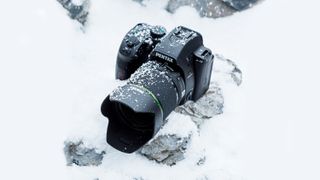
Specifications
Reasons to buy
Reasons to avoid
Pentax K-70 sample images




✅ You want a rugged DSLR: Dust-proof, weather-resistant and good down to -10 degrees Celsius, the Pentax K-70 is a dependable DSLR for all conditions.
✅ You want image stabilization: The K-70 benefits from Pentax’s 5-axis Sensor Shift system, which helps when shooting at lower shutter speeds.
❌ You want a recent camera: It still offers good value for beginners, but the Pentax K-70 is inescapably long in the tooth.
❌ You’re looking at the kit lens: With softness as you zoom in, you’re better off making your own bundle than buying the K-70 kit lens.
It's several years old, but the Pentax K-70 – or the Pentax KF, which is essentially the same camera with a slightly sharper display – remains a good-value option for beginners who want something different from the 'big two' DSLR manufacturers. It's a particularly good choice if you have a stash of old Pentax lenses gathering dust. The K-70 benefits from a useful articulating screen, while the hybrid live view autofocus system proved to be a practical alternative to the viewfinder during our review.
Our favorite thing about the K-70 is its tough build quality, which is typically lacking in entry-level models. If you're keen to take lots of pictures outdoors – for example, you might want to try landscape photography – then being able to rely on the K-70 in inclement weather is a big bonus. One slight disappointment is the kit lens which is often bundled with the camera: while it offers a longer focal length than most, we found it could be a little soft in places. Still, with solid specs and rugged credentials, the Pentax K-70 is a capable all-rounder that's worth considering.
Read our in-depth Pentax K-70 review
The best beginner DSLR to grow with





Specifications
Reasons to buy
Reasons to avoid
Nikon D5600 sample images

Click here for see the full size image

Click here for see the full size image

Click here for see the full size image

✅ You want to shoot sharp: The D5600 leverages its high-res 24.2MP sensor to deliver impressively sharp, detailed stills.
✅ You want features to grow with: From the articulating touchscreen to the 39-point AF system, the D5600 is well-equipped for learners.
❌ You need 4K video: Despite its generous feature set, the Nikon D5600 is capped at 1080p video recording.
❌ You want rapid Live View AF: Viewfinder autofocus is reliable but Live View AF can be left hunting for subjects in dim conditions.
Here's another beginner DSLR that is holding its own in a market dominated by mirrorless cameras. The D5600 is a step up from Nikon's D3000-series models, with set of specs strong enough to rival the likes of the Canon EOS Rebel T8i / EOS 850D (see above). Key advantages over the D3500 include a large touchscreen that has a vlogging-friendly articulating design to flip round to the front, plus Wi-Fi and a healthy range of additional control on the inside.
In our tests, its 24.2MP sensor produced detailed images that didn't disappoint. In fact, despite the D5600's age, you'll likely need to upgrade to a full-frame camera to get better results. We also found its 39-point AF system to be decent, if a little dated, while polished handling makes the D5600 a well-rounded entry-level DSLR. You need to pay more for the privilege, but it makes sense to go for the D5600 if you want a beginner camera with growing room: it'll be a reliable companion for years to come.
Read our in-depth Nikon D5600 review
The best bargain beginner DSLR





Specifications
Reasons to buy
Reasons to avoid
Canon EOS Rebel T7 / EOS 2000D / EOS 1500D sample images

Click here to see the full-size image

Click here to see the full-size image

Click here to see the full-size image

Click here to size the full-size image

✅ You want a bargain DSLR: Cheaper than a lot of high-end compacts, the 2000D is a great place to start on a budget.
✅ You like the benefits of a DSLR: With logical controls, decent battery life and an easy interface, the 2000D nails the basics.
❌ You want modern performance: Dated 9-point autofocus and limited 3fps burst shooting mean the 2000D is outgunned by rivals.
❌ You want to shoot 4K video: 4K wasn’t mainstream on DSLRs at the time of the 2000D’s release, but it’s an unfortunate omission now.
This is one of the cheapest DSLRs in Canon's current line-up, which also makes it a very cost-effective way to get access to an endless assortment of compatible lenses, flashguns and other accessories. Its low price tag means it understandably lacks some of the fancy tricks of its bigger brothers – including a flip-out display and 4K video recording – but there's still a good level of physical control on offer.
Most importantly, we found the image quality produced by its 24MP sensor to be sound. The camera is designed very much with its target audience in mind, including a Feature Guide to help you understand basic settings. Its impressive battery life is also better than many mirrorless models at this price point. During our review, we found it a well-rounded starter option for those on a budget, with features such as Wi-Fi, NFC and Full HD video rounding out the specs.
Read our in-depth Canon EOS Rebel T7 / EOS 2000D / EOS 1500D review
The best enthusiast DSLR for beginners





Specifications
Reasons to buy
Reasons to avoid
Canon EOS 90D sample images

Click here to see the full-size image

Click here to see the full-size image

Click here to see the full-size image

Click here to see the full-size image

Click here to see the full-size image

Click here to see the full-size image
✅ You like a lot of pixels: With a 32.5MP APS-C sensor, the Canon EOS 90D produces detailed stills with lots of cropping flexibility.
✅ You want to shoot 4K video: Unlike a lot of beginner DSLRs, the EOS 90D can record 4K footage at 30fps, using the full width of the sensor.
❌ You already have an EOS 80D: Unless you need the option of 4K video, the Canon EOS 80D does a remarkable job of shooting stills.
❌ You shoot a lot after dark: Noise is well controlled at lower ISO values, but it becomes very evident at sensitives above 8000.
The Canon EOS 90D might be the last enthusiast DSLR the company ever makes. If so, it’s going out with a bang: the versatile 90D packs a high-resolution sensor which, paired with Canon’s Digic 8 imaging engine, offers the enticing prospect of uncropped 4K video at 30fps. In our tests, color reproduction was superb and there was plenty of detail in both stills and video. A new 216-zone metering system also helped in this department, even if noise did creep into images above ISO 8000.
Like the 80D before it, the deep grip meant the 90D felt comfortable to handle, while a joystick made selecting from the Dual Pixel CMOS AF points a cinch. Battery life is a boon, too, with at least 1,500 shots possible on a single charge in our experience. It's possibly a bit too much camera for an absolute beginner (both in price and features), but there's no doubt it offers a lot of room to grow into. Either way, the 90D proves that DSLRs still very much have a place in the mirrorless world.
To save some money on Canon products, check out our Canon discount codes.
Read our in-depth Canon EOS 90D review
How to choose
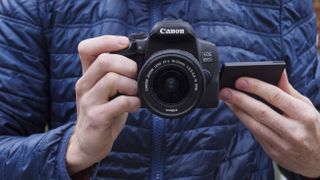
How do I choose the best beginner DSLR?
There are four main factors to consider when buying an entry-level DSLR: the camera's size, sensor size, screen and lens options.
If you're trying to learn your way around manual settings like aperture and shutter speed, which is one of the main benefits of a DSLR, then you'll ideally need a model that's small and light. This means you'll be more likely to take it out regularly and master those controls. The most beginner-friendly cameras, including the Nikon D3500 and Canon 250D, tend to be particularly small for DSLRs, so take a close look at those.
Another factor to consider is the camera's sensor size. Most beginner-friendly DSLRs have APS-C sensors, which are much larger than a smartphone's and more than good enough for those starting out on the photography journeys. But if you're buying second-hand, you may find that full-frame options like the Nikon D610 and D750 come into your price range.
Full-frame cameras aren't necessarily better than APS-C ones. The traditional strengths of full-frame are dynamic range, strong low-light performance, and pleasing bokeh, but these all add to the cameras' size and price. Consider the kinds of things you like to photograph – it can sometimes be easier to shoot distant subjects like wildlife and sports with APS-C cameras due to their narrower angle of view (like in the example below).
If you're looking to shoot lots of video along with your stills, DSLRs can be cheap YouTube workhorses too, so make sure you look out for models with a vari-angle screen (like the ones on most Canon models) if you need this. These can help you shoot from different angles and also flip round to the front so you can check your framing while recording to camera.
Lastly, you'll want to consider lenses. As a beginner, you'll most likely be starting from scratch, which means it makes more sense to buy your DSLR with a kit lens. A word of warning here, though – most manufacturers offer two types of kits lens, one with image stabilization and one without. It's best to go with the image-stabilized kit lens, as you'll be able to shoot sharper images at slower shutter speeds.
While an 18-55mm kit lens will be more than enough to get you started, one of the big benefits of DSLRs is being able to add extra lenses for different kinds of photography. For example, wide-angle and telephoto zoom lenses, as well as high-quality macro options. You can also add a flashgun and other accessories, which help you to make the most of whatever types of photography you're into.

What do different photography terms mean?
When choosing your first DSLR, you'll might come across photography terms that you're not familiar with. To help you decipher these, we've explained some of the main jargon below.
DSLR: This stands for Digital Single-Lens Reflex. The key thing to understand is that DSLR cameras use a mirror to bounce light from the lens on to a sensor inside.
Megapixel (MP): Megapixels are a measure of image resolution. One megapixel equals a million pixels. More megapixels generally means a sharper image.
Sensor size: Sensor dimensions are usually measured in millimeters. Standard sizes are APS-C (16.7x25.1mm) and full-frame (24x36mm). A larger sensor usually gives you better image quality and low-light performance.
ISO: This stands for International Standards Organization. It's a way of measuring a sensor's sensitivity to light. Higher numbers can gather more light in dim conditions, but also introduce grain.
Aperture: This is the opening in a lens that light passes through. Aperture is measured in f-stops. Lower numbers indicate wider apertures, allowing more light to enter the camera.
Shutter speed: This measures how long a camera's shutter stays open to let light reach the sensor. Faster speeds freeze motion; slower creates blur.
Lens mount: This is the mount that allows you to attach different lenses to a DSLR camera. Different manufacturers have their own systems.
Image stabilization (IS): This helps to reduce camera blur when you're taking photos handheld. It can be found in the lens or within the camera body itself.
Autofocus (AF): This feature automatically changes the cameras focus to keep subjects sharp. Faster autofocus speeds help to capture quick-moving subjects.
RAW: A file format that retains more image information from the sensor and gives you more editing options compared to JPEG files.
JPEG: JPEG images are compressed in-camera to make them smaller in size, but offer less flexibility for editing than RAW files.
Viewfinder: An optical viewfinder is one of the key features of a DSLR camera. This viewing window gives you a true preview of a given scene reflected through the lens.
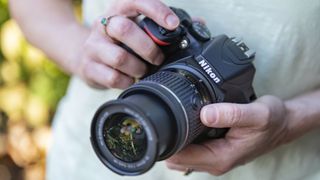
Is mirrorless or DSLR better for beginners?
There are several similarities between the best beginner mirrorless and DSLR cameras. Both give you the option to change lenses, which means you can upgrade to different lenses as your skills grow. Both are also available with a range of sensor sizes, to suit your aspirations and budget.
But there are also key ways in which mirrorless and DSLR cameras differ. The main one is that DSLR cameras use a mirror to reflect light onto their sensor; mirrorless cameras do not. This means mirrorless cameras usually offer faster shooting speeds, which is useful if you'd like to try action or wildlife photography.
DSLR cameras are traditionally known for their big grips and accessible controls. These make them easy and comfortable for learners to handle. Certain mirrorless cameras imitate this DSLR styling, but many have more compact bodies. This can affect their ergonomics, but also makes them a good choice for beginners who want a camera that’s easy to carry around.
DSLR cameras are also known for their optical viewfinders, which give you a true picture of the scene that you’re shooting. Mirrorless cameras, in contrast, utilise electronic viewfinders and/or touchscreens for framing purposes. The latter can be easier to adjust to if you’re upgrading from a smartphone, but many beginners prefer the analogue experience of an optical viewfinder.
Whether a mirrorless or DSLR camera is better for you will come down to personal preference. It’s worth noting that entry-level DSLR cameras tend to be more affordable than their mirrorless equivalents. For more detail, it's worth reading our comprehensive mirrorless vs DSLR cameras guide. If you don’t know what kind of camera you need at all, check out our easy-to-follow guide: what camera should I buy.
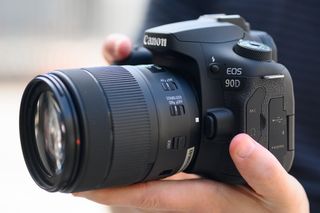
Canon vs Nikon: which is better for beginners?
Even though Pentax still makes DSLRs, Canon and Nikon rule the market with the most DSLR models under their individual belts. And they both compete in terms of feature set, image quality and price. So which brand's entry-level DSRLs is best for you?
That will be a personal choice. Both manufacturers have several excellent choices as you can see from our list above. Both have beginner DSLRs that are compact, easy to use and come with a plethora of lenses to support your growing passion for photography. A lot of them are also wallet-friendly, in case you're looking for a budget DSLR.
The only points of difference between the two are the external button layout and internal menu setup – they're different on Canon and Nikon. That said, both are user-friendly, so the ultimate choice will come down to which one suits you best.
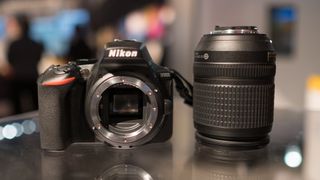
Meet the team
Between our team of reviewers we have tested all entry-level DSLR cameras rigorously, utilizing our many years of camera experience and testing.

Tim is TechRadar's Cameras Editor and has been cutting his teeth in the photo and video industry for almost 20 years. He looks after all of TechRadar's cameras content, covering buying guides, features, reviews and news.

Rod is an independent photographer and photography journalist with more than 30 years' experience. He's previously worked as Head of Testing for Future’s photography magazines, including Digital Camera, N-Photo, PhotoPlus, Professional Photography, Photography Week and Practical Photoshop, and as Reviews Editor on Digital Camera World.
Phil Hall is an experienced writer and editor having worked on some of the largest photography magazines in the UK, and a former editor of the photography channel of TechRadar. He has also worked on numerous commercial projects, including working with manufacturers like Nikon and Fujifilm on bespoke printed and online camera guides.

Sharmishta is TechRadar's Managing Editor for the APAC region, looking after the day-to-day functioning of the Australian, New Zealand and Singaporean editions of the site. Her expertise lies in photography, having been reviewing cameras and lenses for the last seven years.
Matt has written and reviewed cameras for just about every leading photo publication, including Digital Camera World (where he was Editor), What Digital Camera, WEX and of course TechRadar.

Mark is TechRadar's Senior news editor and has been a technology journalist since 2004. Formerly Trusted Reviews and TechRadar's cameras editor, Mark has tested cameras over many years from all of the leading brands.
How we test beginner DSLRs

☑️ 100s of cameras reviewed
☑️ 15 years of product testing
☑️ Over 16,000 products reviewed in total
☑️ Nearly 200,000 hours testing tech
Buying a camera these days is a big investment, so every camera in this guide has been tested extensively by us. These days, real-world tests are the most revealing way to understand a camera's performance and character, so we focus heavily on those, along with standardized tests for factors like ISO performance.
To start with, we look at the camera's design, handling and controls to get a sense of what kind of photographer it's aimed at and who would most enjoy shooting with it. When we take it out on a shoot, we'll use it both handheld and on a tripod to get a sense of where its strengths lie, and test its startup speed.
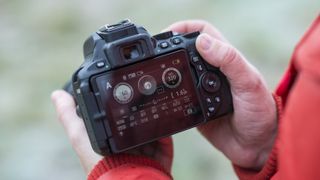
When it comes to performance, we use a formatted SD card and shoot in both raw and JPEG (if available). For burst shooting tests, we dial in our regular test settings (1/250 sec, ISO 200, continuous AF) and shoot a series of frames in front of a stopwatch to see if it lives up to its claimed speeds. We'll also look at how quickly the buffers clears and repeat the test for both raw and JPEG files.
Where applicable, we also test the camera's different autofocus modes in different lighting conditions (including Face and Eye AF) in single point, area and continuous modes. We also shoot a range of photos of different styles (portrait, landscape, low light, macro/close-up) in raw and JPEG to get a sense of metering and its sensor's ability to handle noise and resolve fine detail.
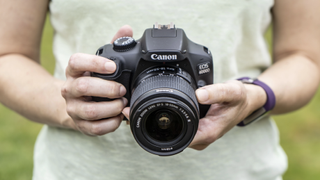
If the camera's raw files are supported by Adobe Camera Raw, we'll also process some test images to see how we can push areas like shadow recovery. And we'll also test its ISO performance across the whole range to get a sense of the levels we'd be happy to push the camera to.
Battery life is tested in a real-world fashion, as we use the camera over the course of the day with the screen set to the default settings. Once the battery has reached zero, we'll then count the number of shots to see how it compares to the camera's CIPA rating. Finally, we test the camera's video skills (where necessary) by shooting some test footage at different frame rates and resolutions, along with its companion app.
We then take everything we've learned about the camera and factor in its price to get a sense of the value-for-money it offers, before reaching our final verdict.
Should you buy a mirrorless camera over a DSLR? Watch our guide video below to learn more:
Get daily insight, inspiration and deals in your inbox
Sign up for breaking news, reviews, opinion, top tech deals, and more.

Tim is the Cameras editor at TechRadar. He has enjoyed more than 15 years in the photo video industry with most of those in the world of tech journalism. During his time as Deputy Technical Editor with Amateur Photographer, as a freelancer and consequently editor at Tech Radar, Tim has developed a deeply technical knowledge and practical experience with cameras, educating others through news, reviews and features. He’s also worked in video production for Studio 44 with clients including Canon, and volunteers his spare time to consult a non-profit, diverse stories team based in Nairobi. Tim is curious, a keen creative, avid footballer and runner, and moderate flat white drinker who has lived in Kenya and believes we have much to enjoy and learn from each other.
- Mark WilsonSenior news editor
- Sharmishta SarkarManaging Editor (APAC)